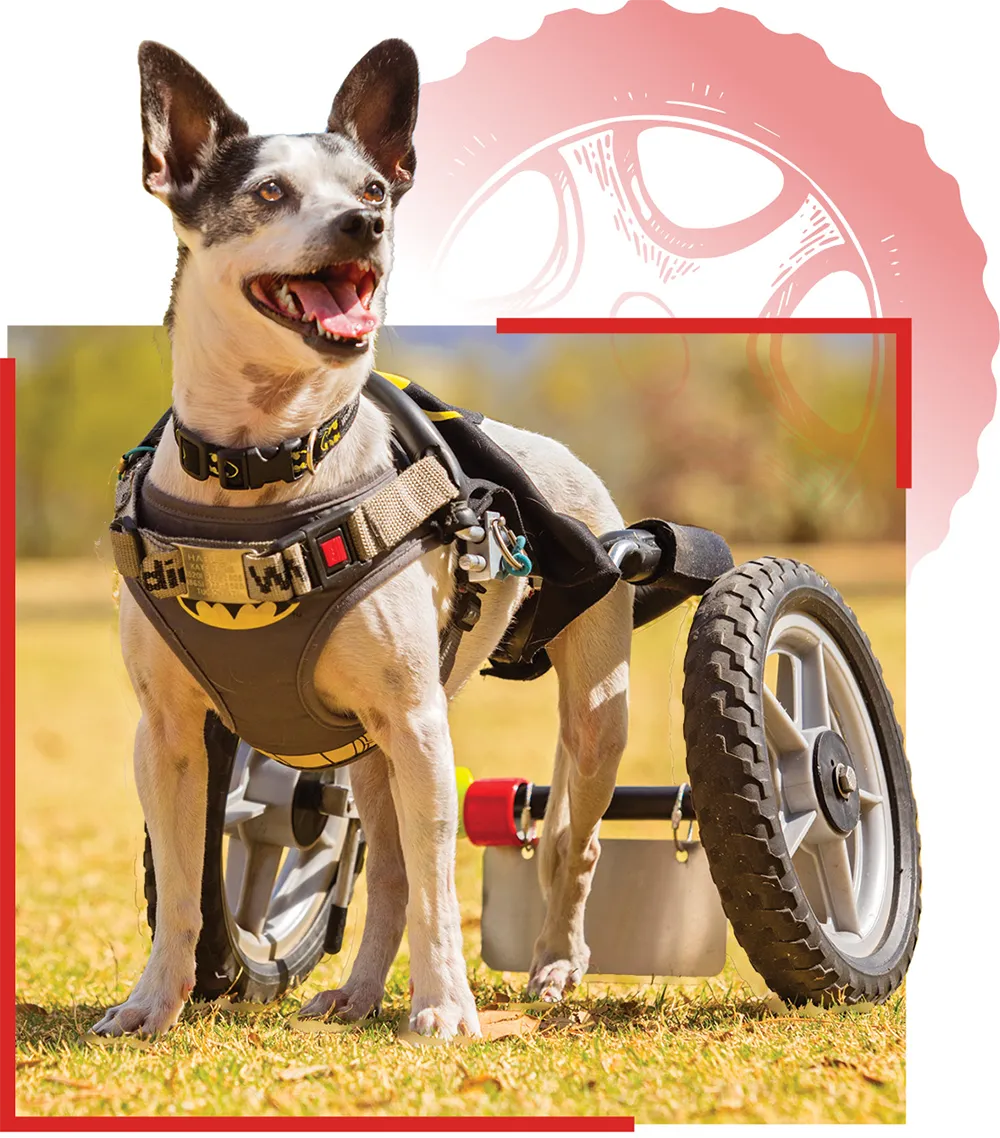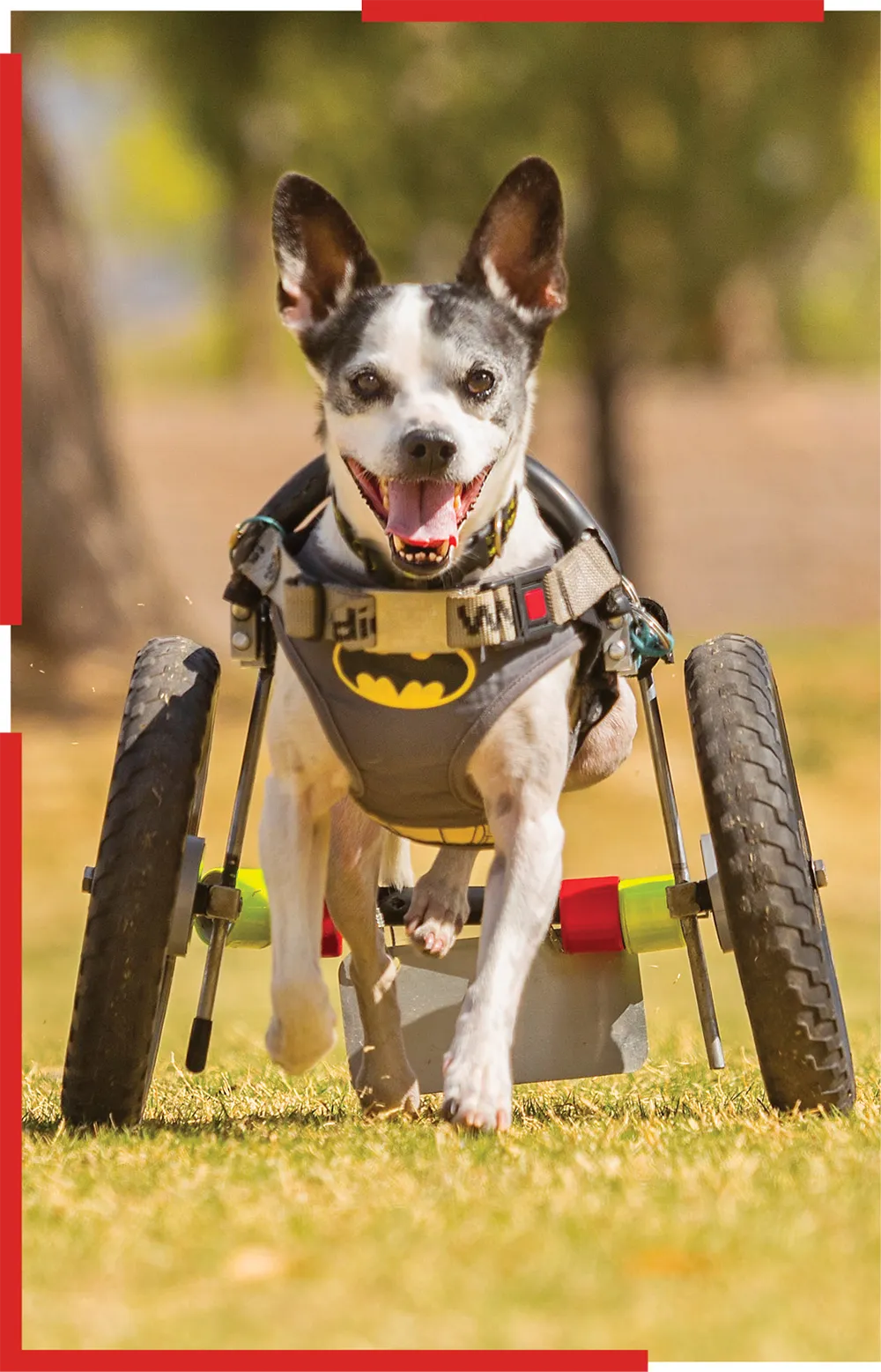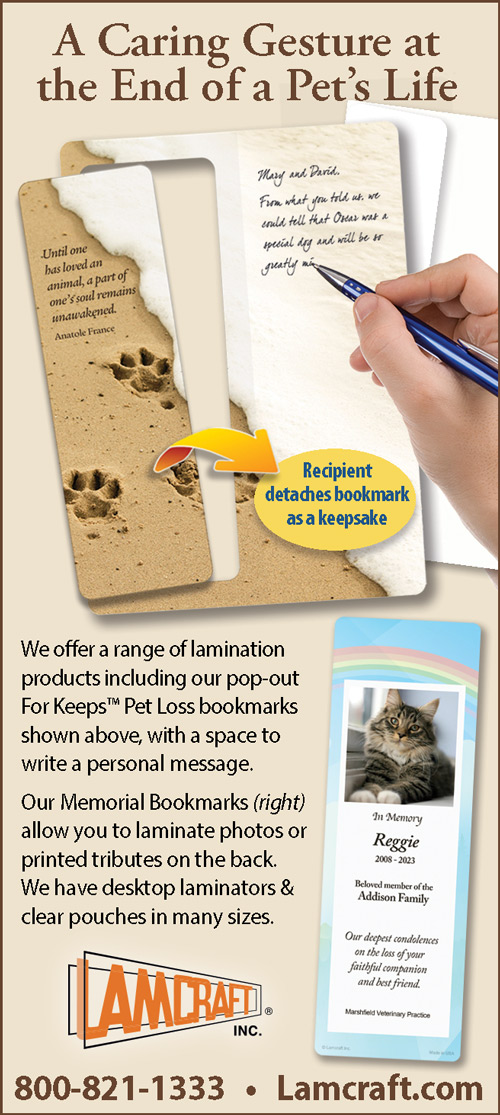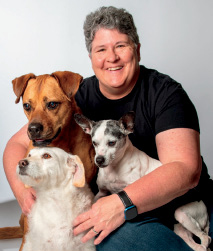


Photos By Tom Spitz
arts, wheelchairs, walkers, wheeled assistive devices, or whatever you want to call them, are becoming more accepted than ever for mobility-challenged pets. Although still somewhat a novelty, these two- and four-wheeled devices are invaluable tools for providing assistance during healing in the short term and independence in those cases where full mobility does not return.
In working with geriatric and mobility-challenged dogs, my focus is on maintaining or improving their activities of daily living (ADLs) in the short and long term. When collaborating with the referring veterinarian, I consider each dog’s condition and assess both current and potential functional abilities based on the diagnosis and prognosis. Is this dog recovering from a mobility-degrading event such as a disc herniation or limb fracture? Or is this a progressive condition such as degenerative myelopathy or osteoarthritis? In all of these cases, I’m considering if and how a cart can improve the dog’s quality of life, enabling them to perform their ADLs as independently as possible.

Carts are a mystery to those who don’t work with them on a consistent basis. During my 14 years as a mobility specialist, I’ve measured and fit nearly 500 dogs (and cats and goats and pigs!) with these wheeled devices. In that time, I’ve heard derogatory comments about carts that were fueled by one of the following four myths. As is often true, these myths are driven by lack of knowledge and experience with dogs in carts.


A cart is one of many tools used to help maintain or improve a dog’s quality of life and it should be regarded as such. As a tool, the cart is not the beginning and the end of mobility support; it’s just one piece of equipment that serves a particular purpose in the grand scheme of overall care, rehabilitation and quality of life.

